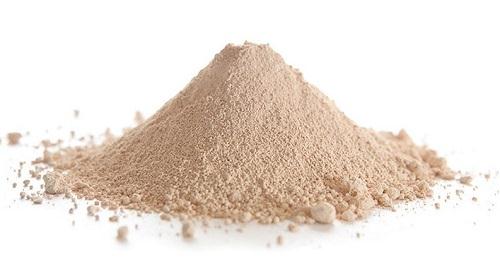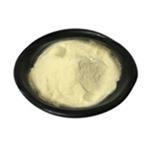Description
Cerium (IV) oxide (chemical formula: CeO2) is an oxide of the rare earth metal cerium. It appears as yellow-white powder. It is an important intermediate during the purification of the Ce element from the ores. It is mainly used in formulations in industry as a high-precision polishing agent for glass products. It can also be used in infrared filters, and used as an oxidizing compound in the catalytic converters as well as a replacement for thorium dioxide in the incandescent mantles. It can also be used as oxidation catalyst due to its interconvertibility, e.g. in oxidation of the natural gas in gas mantles. It can also be used as a mixed conductor due to its significant ionic and electronic conduction. It can be manufactured by the calcination of cerium oxalate or cerium hydroxide.

Uses
Cerium Oxide, also called Ceria, is widely applied in glass, ceramics and catalyst manufacturing. In glass industry, it is considered to be the most efficient glass polishing agent for precision optical polishing. It is also used to decolorize glass by keeping iron in its ferrous state. The ability of Cerium-doped glass to block out ultra violet light is utilized in the manufacturing of medical glassware and aerospace windows. It is also used to prevent polymers from darkening in sunlight and to suppress discoloration of television glass. It is applied to optical components to improve performance. High purity Ceria are also used in phosphors and dopant to crystal.
References
https://en.wikipedia.org/wiki/Cerium(IV)_oxide
http://172.16.24.174/www.solvay.com/en/binaries/Cerium_dioxide_GPS_rev0_Sept12_RHD-139543.pdf
Chemical Properties
Cerium dioxide is white to faintly yellow powder. Relative density 7.132. Melting point 2600°C. Insoluble in water, not easily soluble in inorganic acid. Need to add reducing agent to help dissolve (such as hydroxylamine reducing agent).
Physical properties
White powder in pure form; technical grade material is pale yellow; presence of other lanthanide elements as impurities may impart reddish color; cubic crystal; density 7.65 g/cm
3; melts at 2,400°C; insoluble in water.
Physical properties
Pale yellow cubic crystals.
Abrasive for polishing glass,
interference filters, antireflection
coating. Insoluble in water,
soluble in H
2 SO
4 and HNO
3, but insoluble in diluted acid.
Uses
The addition of CeO2 to CuO/TiO2 increases specific surface area and inhibits sintering and pore size growth at high temperatures. It is used as an additive in glass industry. Cerium dioxide is mainly used as such or in formulation as a high precision polishing agent for glass products, as catalyst or catalyst support. Polishing and decolorizing glass; opacifier in vitreous enamels and photo chromic glasses; heat-resistant alloy coatings; as a cracking catalyst; as a catalyst for automobile emission control; in ceramic coatings; in phosphors; in cathodes; in capacitors; in semiconductors; in refractory oxides; gemstone polishing, as raw material for the production of glass and ceramics as well as additives in paints and varnishes.
Application
Cerium(IV) oxide is used in ceramics, and to polish glass and stones. It is applied as a solid electrolyte in fuel cells. It can also be employed as a co-catalyst in a number of reactions. It is also used as an antioxidant and to generate hydrogen through water splitting. It is used as a high-temperature hydrocarbon oxidation catalyst in self-cleaning ovens. It can be used in infrared filters, incandescent mantles and sunscreens in combination with other materials. It finds use as a catalyst support and to sensitize photosensitive glass.
Definition
Cerium dioxide is a metal oxide with formula CeO2. It is used for polishing glass, in coatings for infra-red filters to prevent reflection, and as an oxidant and catalyst in organic synthesis.
Preparation
Cerium(IV) oxide may be obtained by heating cerium oxalate, carbonate or other salts at elevated temperatures:
Ce
2(C
2O
4)
3 + 2O
2 → 2CeO
2 + 6CO
2
General Description
Cerium(IV) oxide (CeO
2) is a class of rare earth materials which can be synthesized by a variety of methods which include thermal hydrolysis and hydrothermal method. Its properties include a high refractive index, and dielectric constant.
Flammability and Explosibility
Not classified
reaction suitability
reagent type: catalyst
core: cerium
Toxics Screening Level
The Initial Threshold Screening Level (ITSL) for cerium oxide is 0.9 μg/m3 with annual averaging time.





